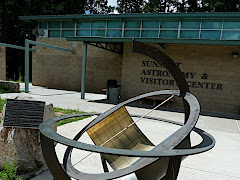time

Despite all the talking about inevitability of its flow, time is actually quite a flexible concept. We are driving east on the interstate 90 and out of a sudden there is a sign: Central Time Zone. We didn’t cross any state borders and - judging by the total blackness on both sides of the highway - we are in the middle of nowhere. And without much warning one hour of our day is gone. I suppose middle of nowhere makes sense for a time zone change. And the hour that we just gave up wasn’t ours to keep. We borrowed it in July when driving through similarly empty Texas. Although why in South Dakota the time zone change line isn’t straight is beyond me - there are only 4 states in the Union with fewer people per square mile.
brick
Contrary to the popular opinion American Midwest is a great place to live if you are looking for an urban environment: Omaha in Nebraska, Sioux City and Dubuque in Iowa, Madison and Milwaukee in Wisconsin to name just a few that we’ve passed. Even Chicago - although The Windy City is obviously in a league of its own. Incidents of history made them busy industrial towns at the time when brick was the nonflammable material of choice. The warehouses and factories had to be built near city centers. Transportation was either slow, by horse drawn wagons, or inflexible by rivers and trains. Just-in-time production has been a thing of the future missing the crucial component: a real-time inventory tracking. One needs computers for that and Victorian inventors somehow have not progressed from theory to practice. Hence the need for large space devoted to storing raw materials, components and finished products around factories. What results are solemn permanent structures: large enough to impress and provide some backbone to the city grid. Small enough not to intimidate unsuspecting pedestrians.
privacy
Do you want me to take a photo of you two?, she asks. No, thank you., I shake my head. She must be blind and deaf because she yells: is it a yes or a no? Yet she is ready to jump out of her car and walk 20 yards just to take our picture. How rude of us to decline. I am getting tired of the aggressive politeness and hospitality offered here. I don’t like to trust my camera to strangers. I don’t need a proof I visited various attractions together with Damian. And, more importantly, I am used to a different protocol: it’s the people who intend to have their pictures taken that initiate the conversation. And they apologize profusely for invading privacy first.
karma
I try to enjoy eating out. And in most cases I don’t have to try very hard. I am not a culinary snob. Not above enjoying a fancy dinner prepared by someone who actually knows what she is doing. I am also glad if I am offered something fresh and uncomplicated in a reasonably clean environment. When a server is nice and friendly I take it as a bonus. When he is a bit busy and forgetful I don’t let it to spoil my evening. I would be useless as a food critic since I like almost anything. You have to make an effort to disappoint me.
fossils
Extinct animals, discontinued cars and disarmed rockets meet their end at the Great Plains. Grass covers many a secret and is a great backdrop for modern art installations. You get extra points for confounding future archeologist: just to think that we may know as little about Stonehenge as they will deduce about Carhenge. In the 19th century prairie provided in abundance: land was parceled out to whoever would claim it, bones were dug up and carted off to whichever museum sponsored the dig. Military installations served the immediate purpose of suppressing native population.
prairie
This was always a land to be crossed as quickly as possible. Both for 19th century pioneers and for 21th century road trippers. The reasons might be different. Pioneers going West to Oregon and California thought of the prairie as a desert. No timber, no water, no soil good for farming. Little did they know that the land sits on top of the Ogallala Aquifer. Which happens to be the largest in the word.